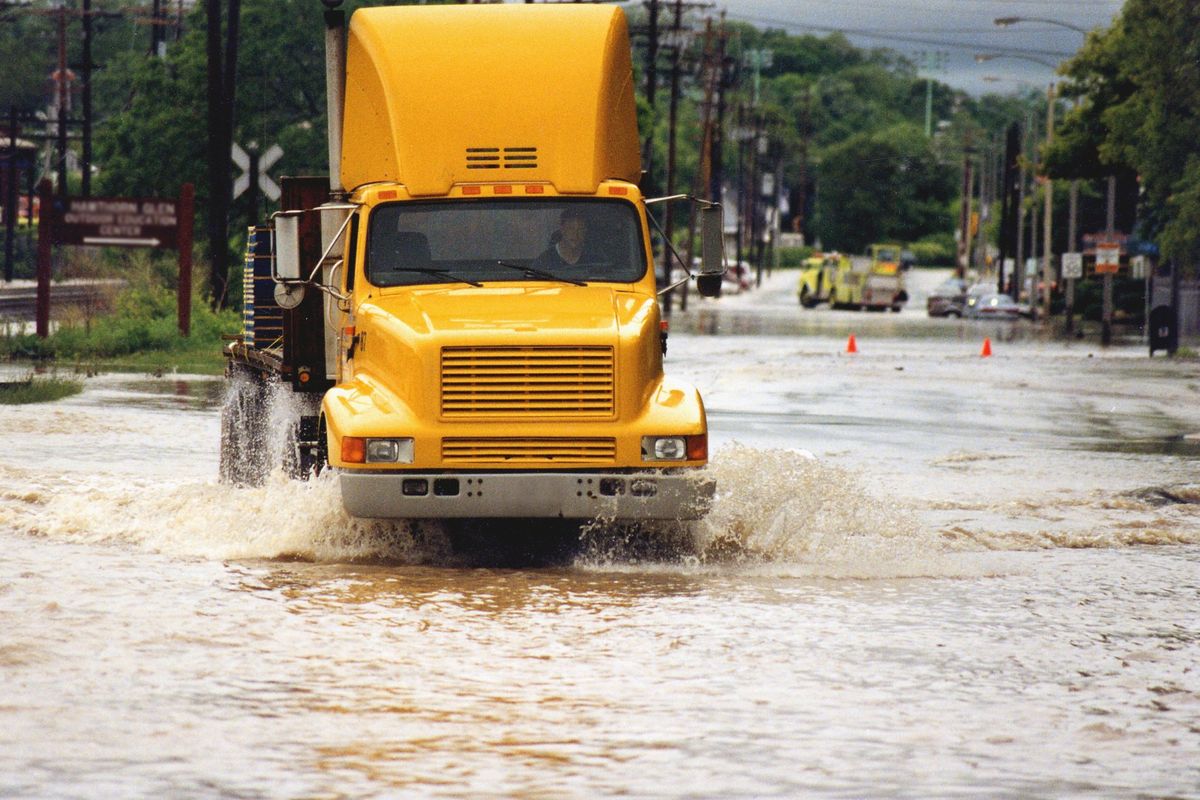
Dos and Don'ts of Driving in the Rain
You may know the saying, “April showers bring May flowers,” but these same wet conditions also create a variety of dangerous road hazards for professional drivers. In fact, flooding is now ranked as the second deadliest weather hazard in the U.S. each year, according to the National Weather Service. (Excessive heat is currently listed as the Number 1 deadliest U.S. weather hazard).
The Two Most Common Types of Flooding:
- River flooding – This happens when waterways overflow their banks and spill onto roadways.
- Flash flooding – This happens when low-lying areas flood within minutes or hours after a strong storm.
The top tip for staying safe when driving during and after rainstorms: don’t drive through standing water. It’s often deeper than it looks. Plus, it takes just four inches of water to cause trouble. If water splashes up and into your engine compartment, it could stall your truck for good. Driving over standing water can also result in hydroplaning. Hydroplaning happens when the tires on your vehicle lose their grip on a road surface and instead slide on the film of water sitting on top of the road. Hydroplaning dramatically reduces a driver's ability to steer and brake. Remember that just two feet of running water can carry away trucks and SUVs.
Water is also heavy. It causes roads to crumble, creating potholes and debris you can’t see.
Other Dos and Don'ts for Driving in Heavy Rain:
DO Know your route. Plan ahead for alternate routes — away from bodies of water — if you expect strong storms along your normal route.
DO Watch the weather. A flash flood watch is the most serious — it means heavy rain is nearby. A flash flood warning means you should prepare for potential flooding.
DO Take barriers seriously. If you see a Road Closed sign by standing water, obey it.
DO Keep up on truck maintenance. Make sure your wipers aren’t ripped or torn, your tires have the proper tread depth, and your lights and brakes work as expected.
DO Slow down and keep your distance. Plan to travel at least 5 mph slower than the posted limit when driving in rain. Keep at least seven seconds away from the vehicle in front of you. Always be ready to change your speed and following distance depending on the current road conditions.
DO Use your headlights when driving through downpours. This will help you see the road, and it will help other drivers see your truck.
DON’T slam on the brakes if you hydroplane. Instead, lift off the accelerator and keep the steering wheel straight.
DON’T use cruise control or your Jake brake on wet roads.
DON’T “tough it out.” Know your limits. If you feel unsafe while driving, find a safe place to park and wait until the storm passes.
DON’T try to move your truck if it gets stuck in standing water. Instead, exit the vehicle immediately, get to higher ground and call for service.